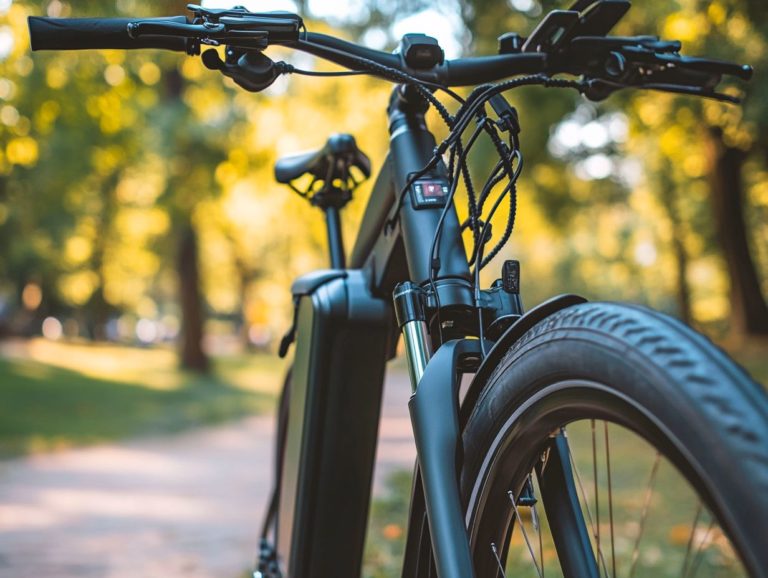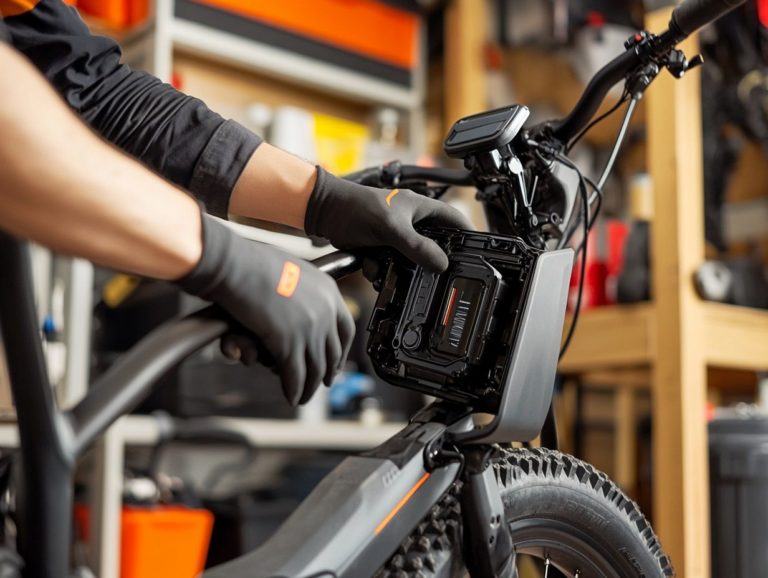Are There Different Classes of Electric Bicycles?
Electric bicycles, or e-bikes, are changing how you get around. They combine the ease of traditional bikes with electric power.
Understanding the different classes of e-bikes is crucial. This article explains the three main types: pedal assist, throttle assist, and speed pedelec.
It also highlights the benefits of e-bikes and offers tips for choosing one that fits your lifestyle.
Contents
- Key Takeaways:
- What are Electric Bicycles?
- Types of Electric Bicycles
- Legal Requirements and Restrictions
- Benefits of Electric Bicycles
- Choosing the Right Class for Your Needs
- Frequently Asked Questions
- Are There Different Classes of Electric Bicycles?
- What is Class 1 electric bicycle?
- What is Class 2 electric bicycle?
- What is Class 3 electric bicycle?
- Do all states have the same regulations for electric bicycles?
- Do I need a license to ride a Class 3 electric bicycle?
- Are there any age restrictions for riding an electric bicycle?
Key Takeaways:
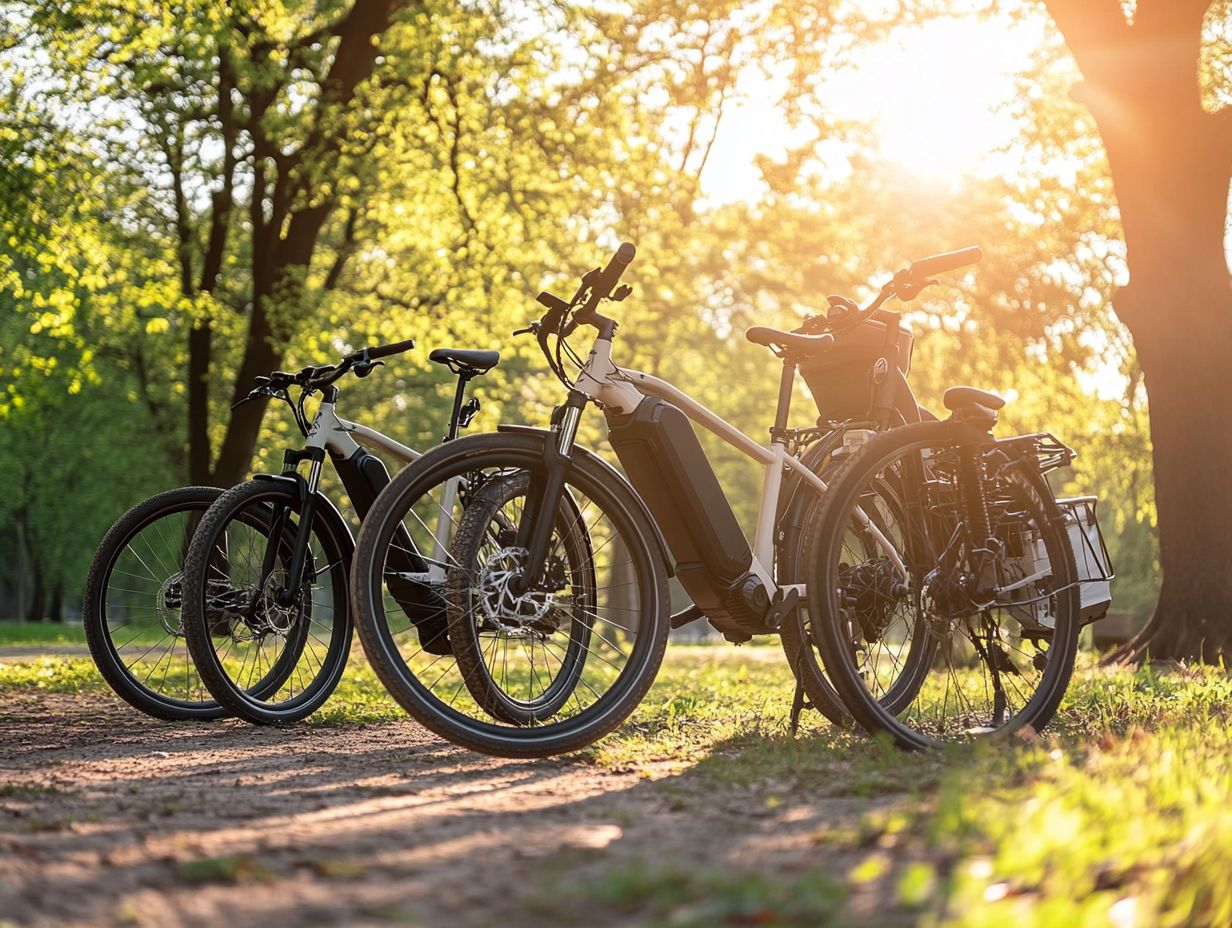
- Electric bicycles are a popular alternative for transportation, with different classes based on motor assistance.
- Each class has unique legal requirements; some are allowed on bike lanes, while others are road-restricted.
- Consider speed, physical activity level, and local laws when picking the right e-bike class for you.
What are Electric Bicycles?
Electric bicycles, often known as e-bikes, represent a remarkable fusion of electric motor technology with classic pedaling systems. These versatile machines cater to a range of riding experiences, allowing you to embrace recreational cycling, navigate your daily commute, or conquer rugged mountain trails.
With industry leaders like Pedego and other electric bike dealers pioneering advancements in e-bike technology, it’s no wonder these bicycles are a hit with riders everywhere!
Types of Electric Bicycles
Electric bicycles fall into three distinct categories: Class 1, Class 2, and Class 3. Each class offers a unique riding experience and features, meticulously tailored to suit your preferences and comply with varying regulatory requirements.
Class 1 e-bikes provide pedal assist, meaning the bike helps you pedal and allows you to enjoy a more traditional cycling feel. In contrast, Class 2 models come equipped with a throttle, a handle you can use to make the bike move without pedaling. Meanwhile, Class 3 bikes are engineered for higher speeds, often reaching up to 28 mph, catering to both your commuting ambitions and recreational desires. If you’re considering the best option for your needs, check out this guide on choosing between different electric bicycle types.
Class 1: Pedal Assist
Class 1 electric bikes are crafted to enhance your ride with pedal assist, meaning the electric motor kicks in only when you re pedaling. This feature helps you reach a maximum speed of 20 mph, making these bikes perfect for a wide range of riding styles and terrains.
With this setup, you get to enjoy a more natural cycling experience while still benefiting from that extra boost, especially on hills or during longer excursions. For fitness enthusiasts, Class 1 e-bikes are a game changer; they encourage regular pedaling, enhancing your cardiovascular health without the added strain of traditional biking. If you’re curious about the regulations, you might wonder if electric bicycles have a speed limit.
Safety is key, so it’s wise to wear a helmet and stay aware of your surroundings, especially on bike paths, which are increasingly welcoming to these eco-friendly rides. Importantly, Class 1 e-bikes align with local regulations and are typically classified as bicycles. To better understand how these classifications work, check out this resource on understanding the legal classifications of electric bikes, meaning you won’t need any special licensing, although age restrictions may apply.
This compliance not only makes these bikes accessible to a broader audience but also fosters responsible cycling habits, allowing everyone to enjoy the ride sustainably.
Class 2: Throttle Assist
Class 2 electric bikes come equipped with a handy throttle, giving you the freedom to engage the motor without pedaling. This feature makes them an excellent choice for commuters and those who prefer a more accessible riding experience.
Typically, these bikes cap out at a maximum speed of 20 mph. This versatility draws in a diverse array of users, from casual riders to individuals facing mobility challenges, effectively expanding urban transport solutions. To learn more about different types, check out what are the classifications of electric bicycles. These e-bikes offer an exciting alternative to traditional commuting methods, helping you live more sustainably in the city.
Make sure you know your local rules to ride safely, as they can vary significantly based on your location. Understanding age restrictions and permissible riding areas is crucial for a safe and enjoyable experience, while also contributing to the growing acceptance of electric bicycles within the broader transportation landscape. Additionally, it’s helpful to explore what are the differences between e-bike models to find the best option for your needs.
Class 3: Speed Pedelec
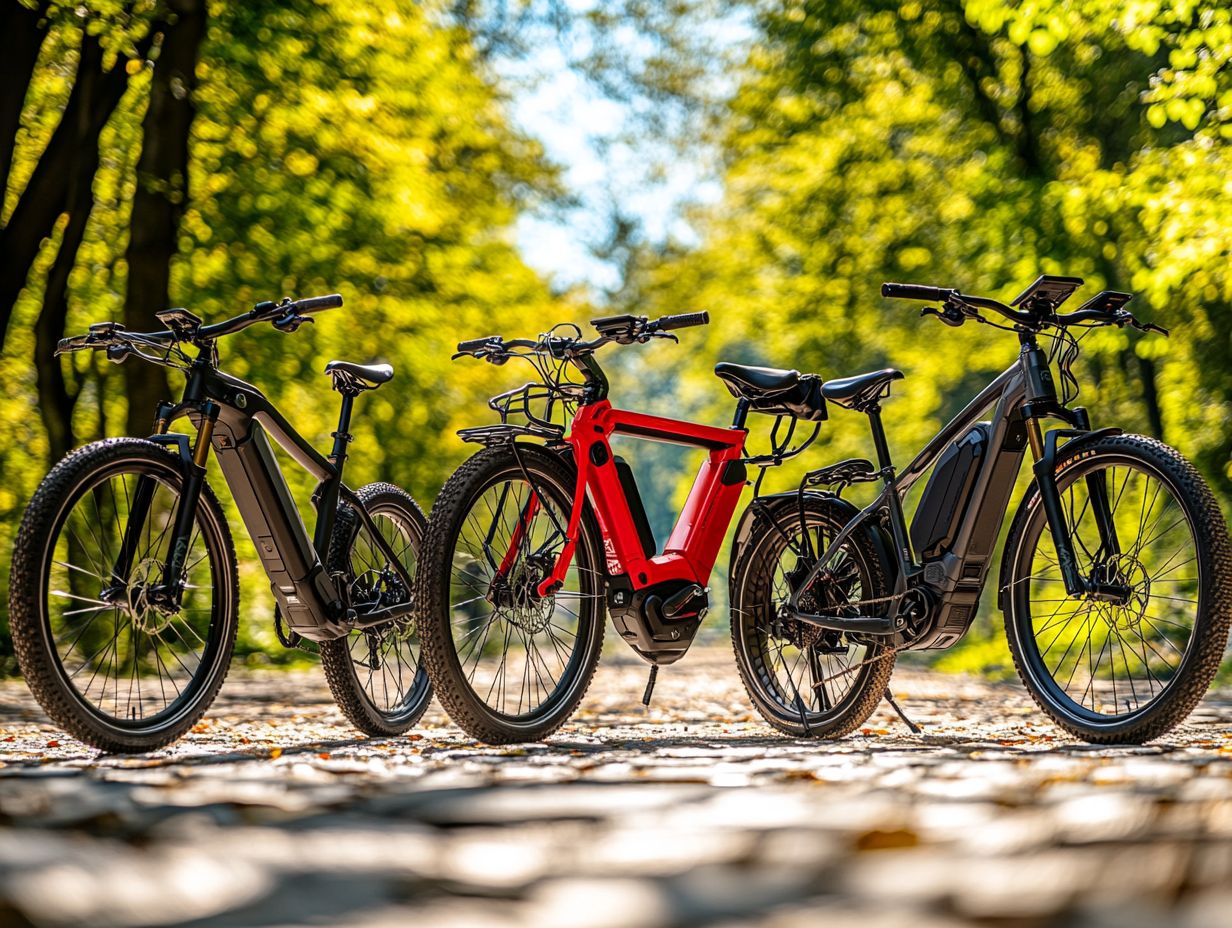
Class 3 electric bikes, or Speed Pedelecs, are designed for those who crave performance, offering pedal assist up to a thrilling 28 mph. It’s no wonder they have become the go-to option for serious commuters and recreational riders on the hunt for speed.
These e-bikes don t just promise swift journeys; they re also loaded with advanced features like regenerative braking, which helps recharge the bike’s battery when you brake, and enhanced battery capacity. This means longer rides without the hassle of frequent recharging. Many enthusiasts love how these bikes can tackle various terrains, making them perfect for bike trails and outdoor escapades.
However, keep local regulations in mind since Class 3 e-bikes may face restrictions on certain paths. For more information, check if electric bicycles are considered motor vehicles, as age restrictions usually apply, setting the minimum age at 16, ensuring that everyone rides safely and responsibly.
Legal Requirements and Restrictions
Understanding the legal requirements and restrictions surrounding electric bicycles is crucial for you as a rider. By familiarizing yourself with local and federal regulations, you can ensure a safe and enjoyable riding experience while navigating bike paths and trails in different jurisdictions.
This knowledge enhances your safety and helps you respect the rules of the road, particularly regarding rider age and licensing requirements, allowing you to fully embrace the thrill of your ride.
Regulations for Each Class
Each class of electric bicycle comes with its own set of regulations influenced by both federal and local laws that can differ significantly from one state to another. These variations impact your riding conditions and safety guidelines.
If you opt for a Class 1 e-bike, which is a pedal-assist model, you’ll typically find greater access to bike paths and trails. In contrast, if you’re considering a Class 2 e-bike equipped with a throttle allowing you to ride without pedaling, you may encounter stricter usage restrictions in certain areas. For more detailed information, check out this quick guide to electric bicycle classification due to safety concerns.
Then there’s the Class 3 e-bike. Designed for higher speeds with a more robust assist mechanism, these bikes often come with additional regulations, such as mandatory helmet use and restrictions on riding them on paths instead of roads. For a deeper dive into the understanding different types of electric bicycles, these distinctions influence how you ride and shape your overall experience while navigating diverse terrains and urban landscapes.
Benefits of Electric Bicycles
Electric bicycles present a wealth of advantages that transcend simple transportation. They encourage a healthier lifestyle, diminish your environmental footprint, and provide efficient commuting options, setting the foundation for significant lifestyle changes.
This makes them an invaluable asset in the realm of urban mobility solutions.
Environmental Impact and Health Benefits
The environmental impact of electric bicycles is largely positive. They significantly reduce carbon emissions compared to traditional vehicles. Electric bikes also offer substantial health benefits by promoting increased physical activity during daily commutes and outdoor adventures.
This rise in electric bike usage leads to cleaner air by cutting down on pollutants. It also plays a vital role in combating climate change through reduced reliance on fossil fuels. E-bikes encourage a more active lifestyle, inviting you to incorporate cycling into your routine. This enhances your cardiovascular health and overall fitness.
By making cycling accessible to a wider audience including those who may shy away from more strenuous exercise electric bicycles cultivate a culture of mobility. This supports both your personal well-being and environmental sustainability, enhancing fitness benefits.
Choosing the Right Class for Your Needs
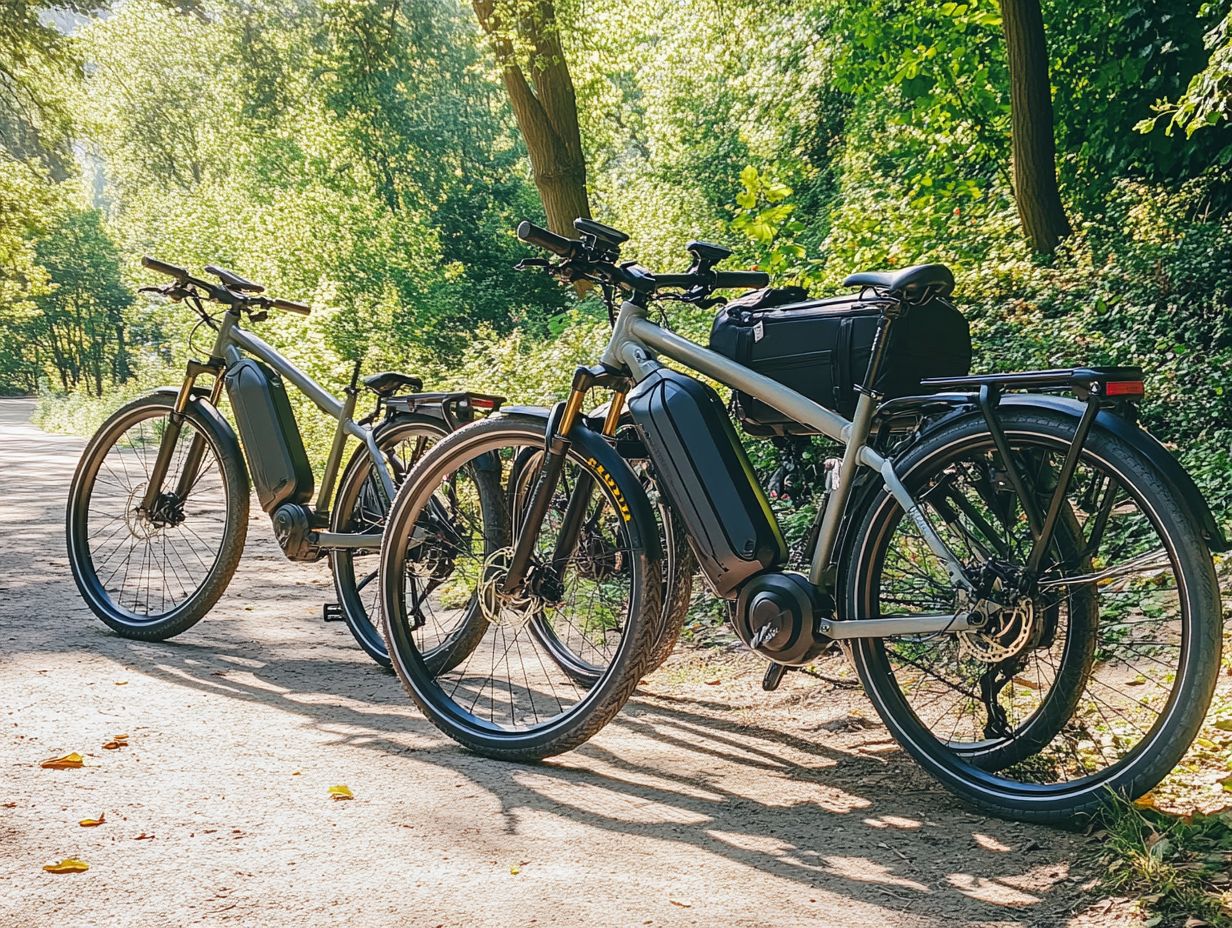
Finding your ideal electric bike class is an exciting step toward a thrilling ride! Choosing the perfect class of electric bike is essential to ensure it fits your personal needs. Consider factors like your age, intended use, and riding experience. This approach enhances both usability and enjoyment, allowing you to fully embrace the ride.
Factors to Consider
When choosing the right electric bike, it s vital to consider various factors. Think about your preferred riding styles and usability, along with the battery performance that meets your commuting and recreational needs.
Understanding the wattage output of motor types can also enhance your riding experience. These factors significantly influence your comfort and safety.
If you re a younger rider, you might prioritize speed and agility, gravitating toward models that excel in performance. Conversely, older cyclists may prefer bikes that emphasize stability and ease of use.
Grasping the intricacies of battery performance is essential. A bike equipped with a high-capacity battery allows for longer rides without worrying about a quick charge. Additionally, if you’re considering an electric bike, it’s important to know if there are weight limits for electric bicycles. Ultimately, aligning these features with your personal requirements will help you select the perfect electric bike tailored to your lifestyle.
Frequently Asked Questions
Are There Different Classes of Electric Bicycles?
Yes, there are three different classes of electric bicycles: Class 1, Class 2, and Class 3.
What is Class 1 electric bicycle?
Class 1 electric bicycles have a motor that provides assistance only while the rider is pedaling, with a maximum speed of 20 mph.
What is Class 2 electric bicycle?
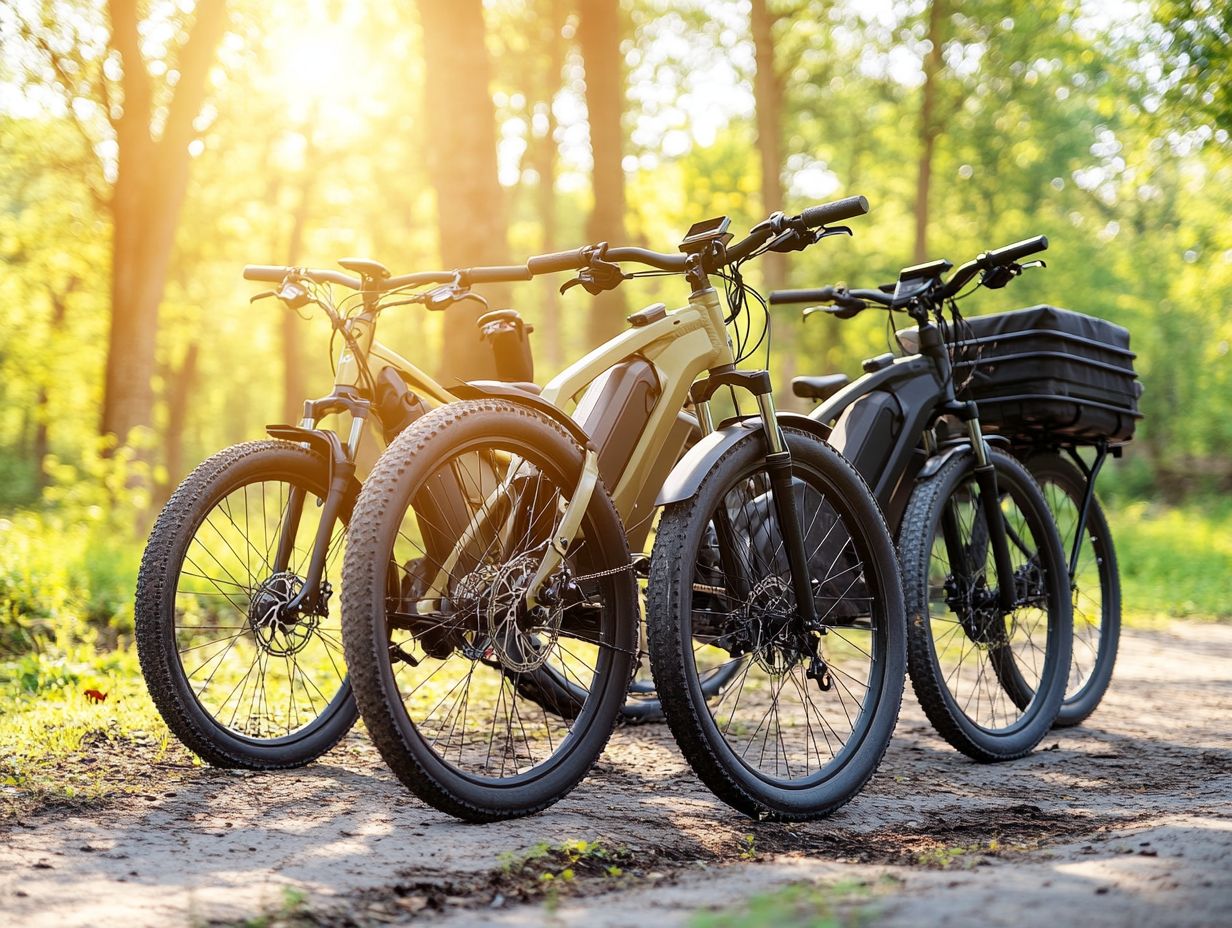
Class 2 electric bicycles have a motor that can be used without pedaling, also with a maximum speed of 20 mph.
What is Class 3 electric bicycle?
Class 3 electric bicycles have a motor that provides assistance only while the rider is pedaling, with a maximum speed of 28 mph.
Do all states have the same regulations for electric bicycles?
No, regulations for electric bicycles vary by state. Some states may have additional restrictions or requirements for different classes of electric bicycles.
Do I need a license to ride a Class 3 electric bicycle?
It depends on the state you live in. Some states may require a special license or permit for Class 3 electric bicycles, while others may not.
Are there any age restrictions for riding an electric bicycle?
Again, this varies by state. Some states have age restrictions for riding certain classes of electric bicycles, while others do not have any age restrictions.
Explore or test ride electric bikes today to find the perfect fit for your adventure!




